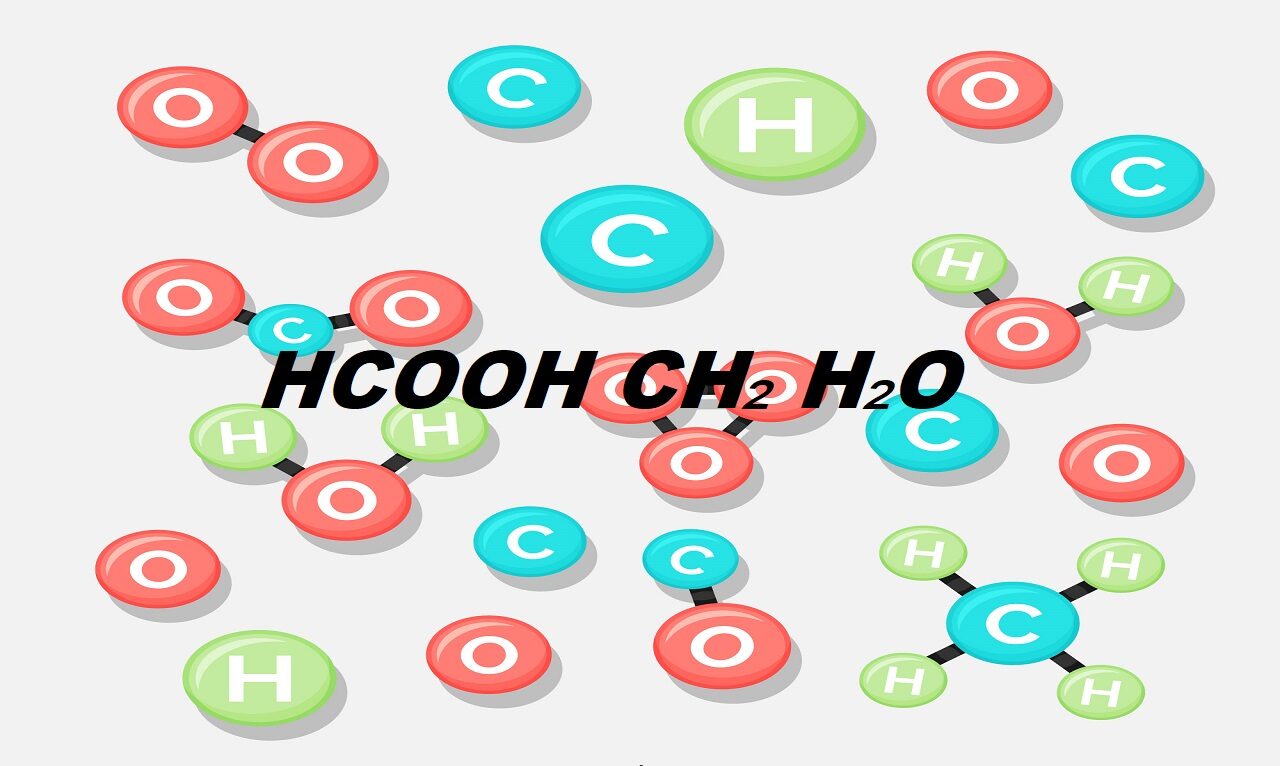HCOOH CH₂-H₂O: Chemical reactions play a crucial role in various scientific and industrial processes. One such reaction involves formic acid (HCOOH) and methane (CH₂), resulting in the formation of water (H₂O). In this blog post, we’ll explore the reaction mechanism, its significance, and potential applications in chemistry and industry.
Table of Contents
ToggleUnderstanding the Chemical Reaction
The reaction HCOOH CH₂ H₂O represents a transformation involving formic acid and methane. However, this equation appears incomplete or incorrectly balanced. Let’s break it down:
- Formic Acid (HCOOH) – The simplest carboxylic acid, commonly used in chemical synthesis and as a preservative.
- Methane (CH₂?) – Methane is usually represented as CH₄. If CH₂ refers to a methylene group, further clarification is needed for its exact role in the reaction.
- Water (H₂O) – A common product in many chemical processes.
If this reaction involves the decomposition of formic acid, a more conventional reaction would be:
HCOOH→CO+H2OHCOOH → CO + H₂OHCOOH→CO+H2OAlternatively, if the reaction involves formaldehyde (CH₂O), it might proceed as:
HCOOH+CH2O→CO2+H2O+H2HCOOH + CH₂O → CO₂ + H₂O + H₂HCOOH+CH2O→CO2+H2O+H2To ensure proper balancing and feasibility, consulting a detailed chemical analysis would be necessary.
Significance of This Reaction
1. Industrial Applications
- Hydrogen Production – Formic acid is a potential hydrogen carrier in fuel cell technology.
- Chemical Synthesis – It plays a role in the production of other organic compounds.
2. Environmental Impact
- Carbon Capture – Some formic acid reactions help in carbon dioxide reduction.
- Green Chemistry – Utilizing formic acid can be a step toward more sustainable chemical processes.
3. Laboratory and Academic Interest
- Researchers study such reactions to understand energy-efficient pathways for fuel and chemical production.
Conclusion
The reaction involving HCOOH and CH₂ leading to H₂O is an intriguing one, requiring further clarification on its exact mechanism. However, formic acid remains a crucial compound in industrial, environmental, and scientific research. Understanding its reactions helps pave the way for advancements in sustainable chemistry.
Would you like to explore a specific application of this reaction in more detail? Let us know in the comments!
FAQs on HCOOH CH₂ H₂O Reaction
1. What does the reaction HCOOH + CH₂ → H₂O represent?
The reaction appears to involve formic acid (HCOOH) and a methylene group (CH₂), leading to the formation of water (H₂O). However, the equation seems incomplete or incorrectly balanced. A more common reaction involving formic acid is:
HCOOH→CO+H2OHCOOH → CO + H₂OHCOOH→CO+H2O
2. Is CH₂ the correct chemical formula in this reaction?
CH₂ typically represents a methylene group, which is part of larger organic molecules. If you meant CH₄ (methane) or CH₂O (formaldehyde), the reaction mechanism would be different.
3. What are the industrial applications of formic acid (HCOOH)?
- Hydrogen Storage – Formic acid can release hydrogen, making it useful for fuel cell technology.
- Preservative & Antibacterial Agent – Used in food and animal feed.
- Chemical Intermediate – Plays a role in producing textiles, rubber, and pharmaceuticals.
4. Does this reaction have environmental significance?
Yes! Formic acid is being explored for:
- Carbon capture and utilization
- Green hydrogen production
- Sustainable fuel alternatives
5. Can formic acid decompose into water and other products?
Yes, formic acid decomposes via:
HCOOH→CO2+H2HCOOH → CO₂ + H₂HCOOH→CO2+H2or
HCOOH→CO+H2OHCOOH → CO + H₂OHCOOH→CO+H2OThese reactions are studied for their role in hydrogen production and clean energy solutions.
6. Where is formic acid naturally found?
Formic acid occurs in:
- Ant and bee venom
- Nettles and other plants
- Biodegradation of organic matter
7. How does this reaction relate to fuel cells?
Formic acid is a hydrogen carrier, meaning it can be used to generate hydrogen gas for fuel cells, reducing reliance on fossil fuels.
8. What safety precautions should be taken when handling formic acid?
- Wear protective gloves and goggles
- Work in a well-ventilated area
- Avoid direct skin and eye contact
- Store it in a cool, dry place
Would you like a deeper dive into any of these topics? Let me know!
